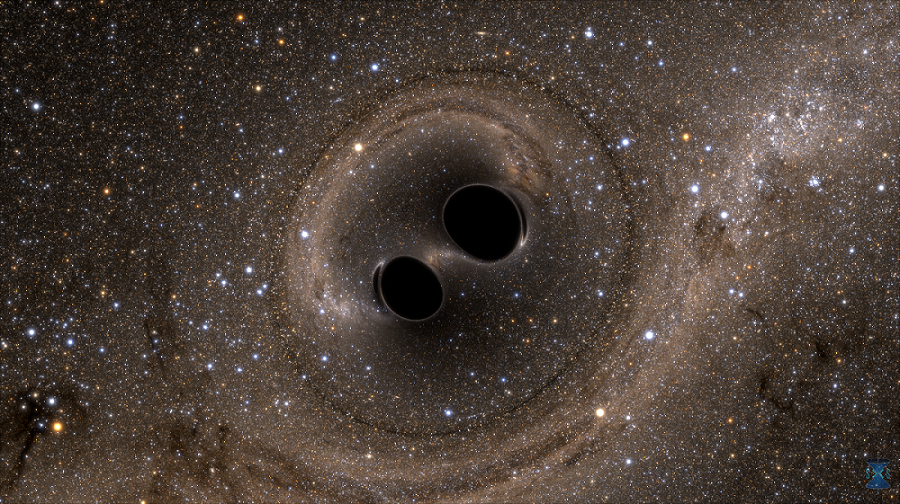Merging Black Holes

In 2015, the LIGO experiment confirmed the existence of gravitational waves, a prediction from Einstein's Theory of General Relativity. This discovery solved a long-standing mystery and showed that mass and energy not only bend space-time but can also create ripples that move at the speed of light and are detectable billions of light-years away.
Building on this, the European Space Agency (ESA) approved the Laser Interferometer Space Antenna (LISA) mission. This will be the first space-based mission to detect gravitational waves, using laser interferometry between three satellites 2.5 million kilometers apart. The mission aligns with the ESA's 2013 goal to explore the "invisible universe."
Credits: Bohn, Throwe, Hébert, Henriksson, Bunandar, Taylor, Scheel/SXS
Are you interested in this topic?
At the University of Zurich, several researchers are actively studying galaxies and cosmology. See how the Astroparticle Physics group at the Institute for Physics is contributing to our understanding of black holes and gravitational waves.
Are you a student that wants to learn more about this topic? Consider enrolling in these courses:
AST 241: Introduction to Astrophysics (Fall Semesters)
AST 245: Computational Astrophysics (Fall Semesters)
AST 293: Proseminar Cosmology (Fall Semesters)
PHY 473: Introduction to Astroparticle Physics and Cosmology (Fall Semesters)
AST 511: General Relativity (Fall Semesters)
AST 512: Theoretical Astrophysics (Fall Semesters)